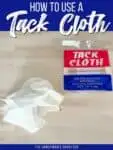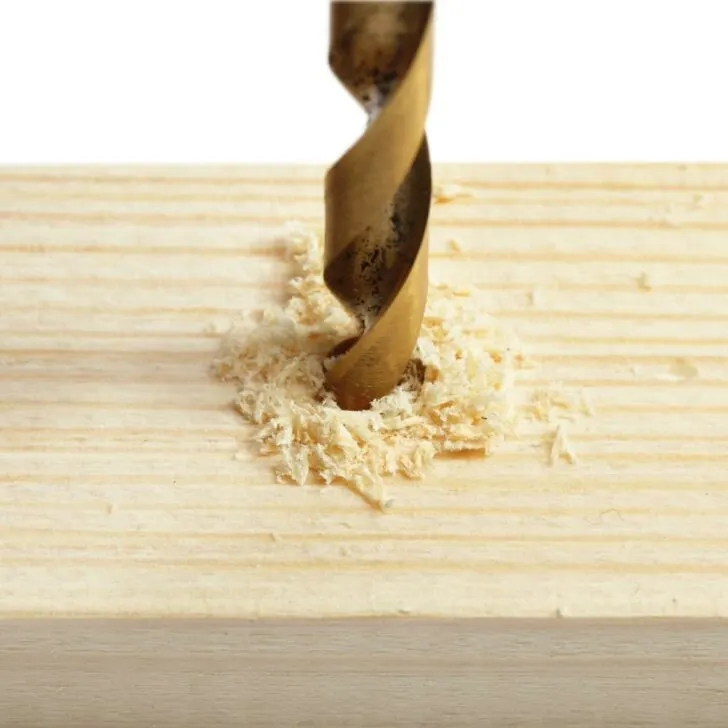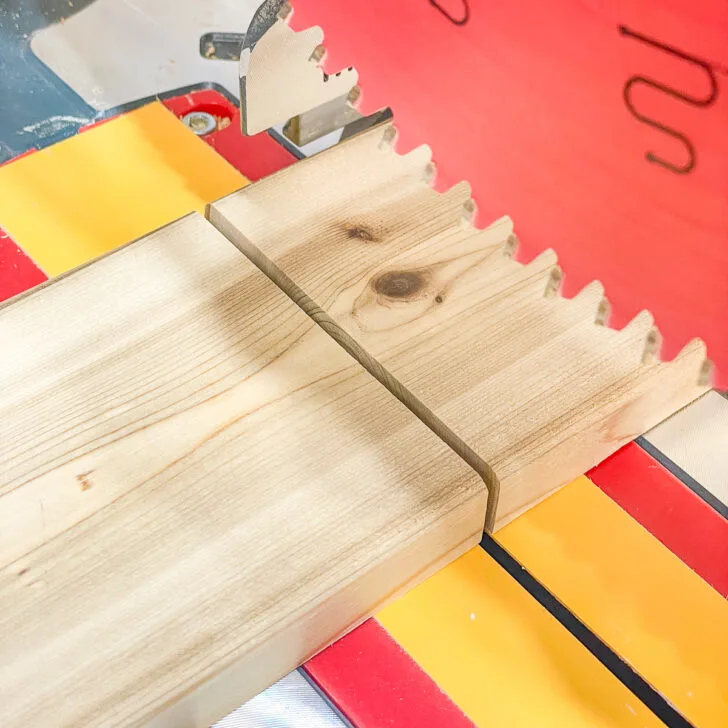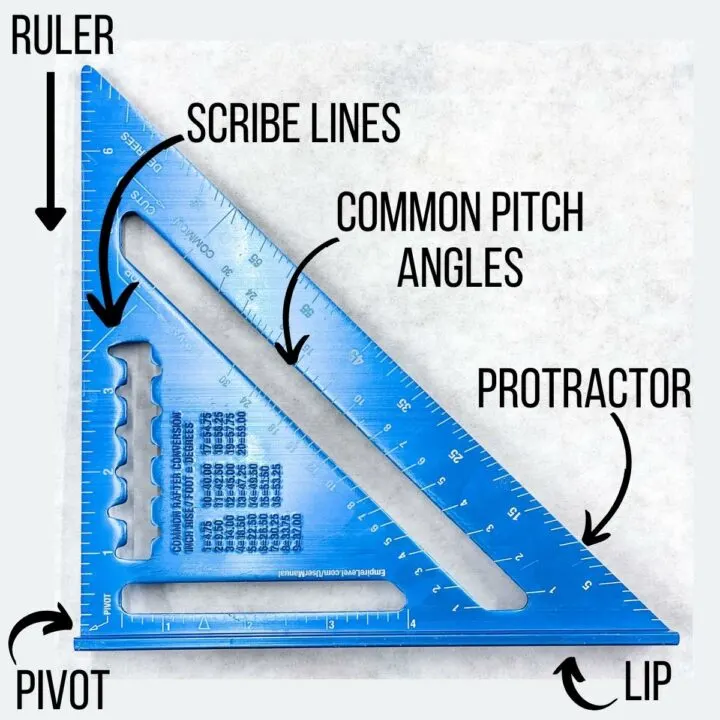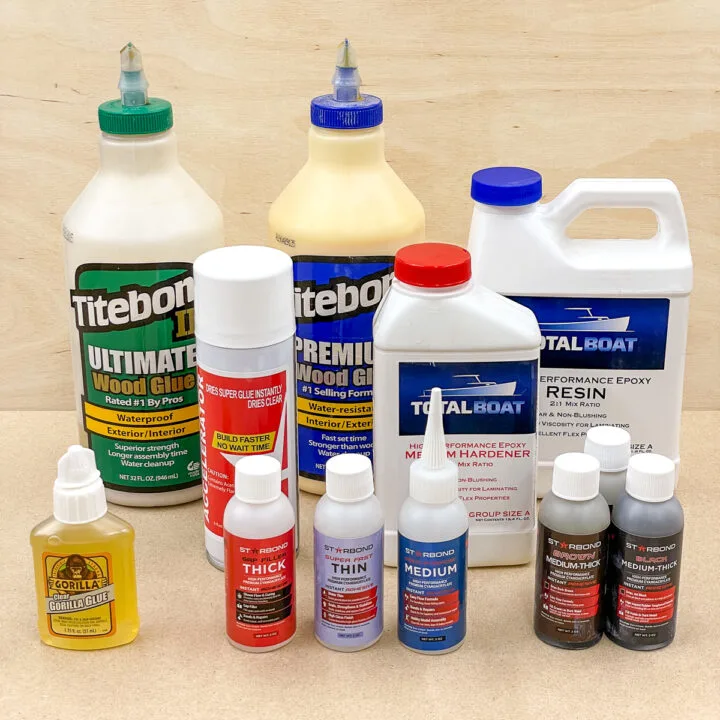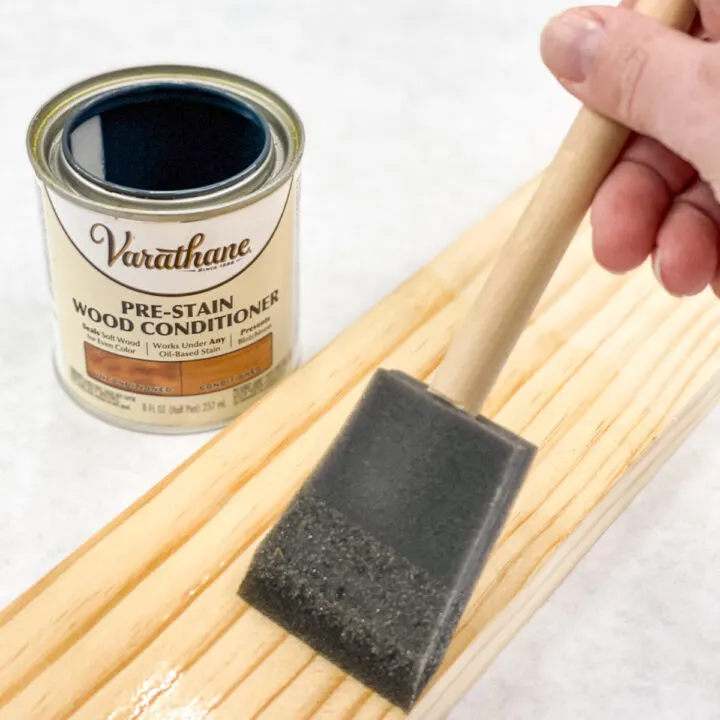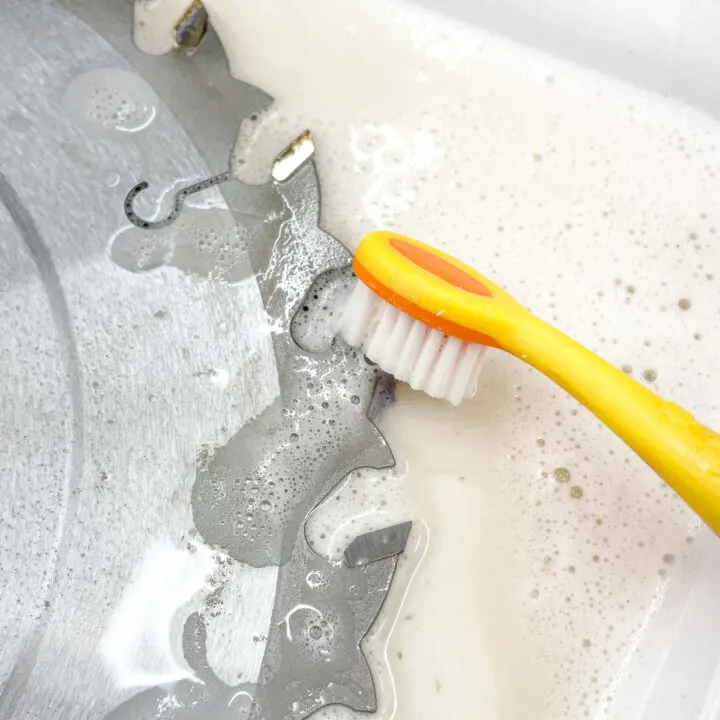Do you want to get a perfect finish when you paint or stain? Learn how to use a tack cloth to remove every speck of dust first!
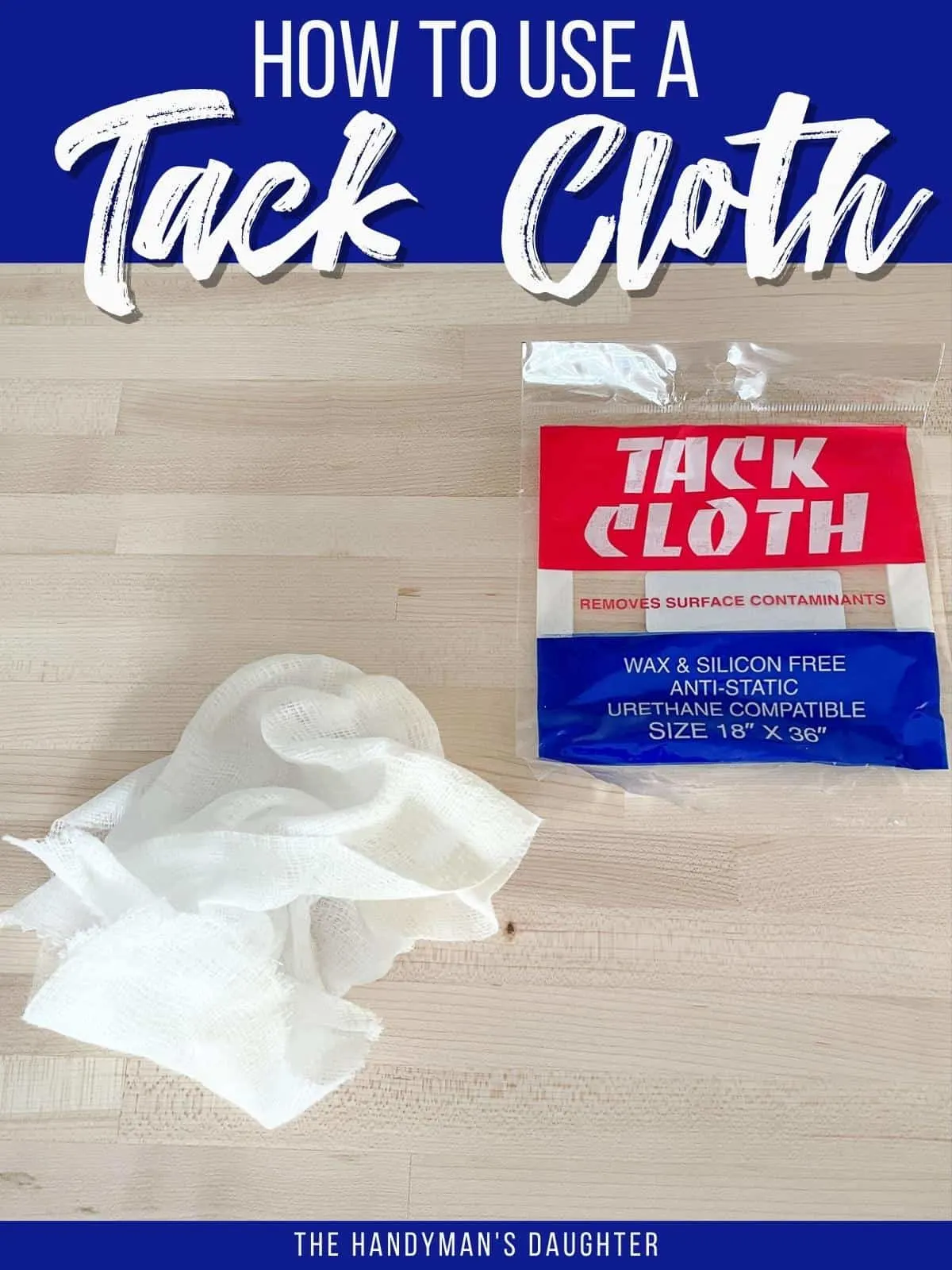
A tack cloth is a valuable tool for removing dust and debris from surfaces before painting or finishing. To use a tack cloth, unfold it and gently wipe the surface, following the grain of the material. The cloth's slightly sticky texture will capture dust, ensuring a clean, smooth surface for optimal adhesion and a flawless finish.
Let’s talk about what tack cloth is, how it works, and how to use it! By the end of this guide, you’ll have a good grasp of the power (and the pitfalls) of this workshop staple.
This post contains affiliate links for your convenience. Purchases made through these links may earn me a small commission at no additional cost to you. Please visit my disclosures page for more information.
What is a tack cloth?
Tack cloth is made from cheesecloth or other gauze-like fabric. The stable cotton or polyester cloth doesn't produce lint like a regular rag might, so it won't leave debris on your project.
The cloth itself is not sticky. It's coated in a variety of substances to give it that tackiness. Some brands use beeswax, while others apply a type of resin.
When you wipe a surface with a tack cloth, the dust particles stick to the fabric and become trapped in the open weave. This removes the dust from the surface, rather than just pushing it around.
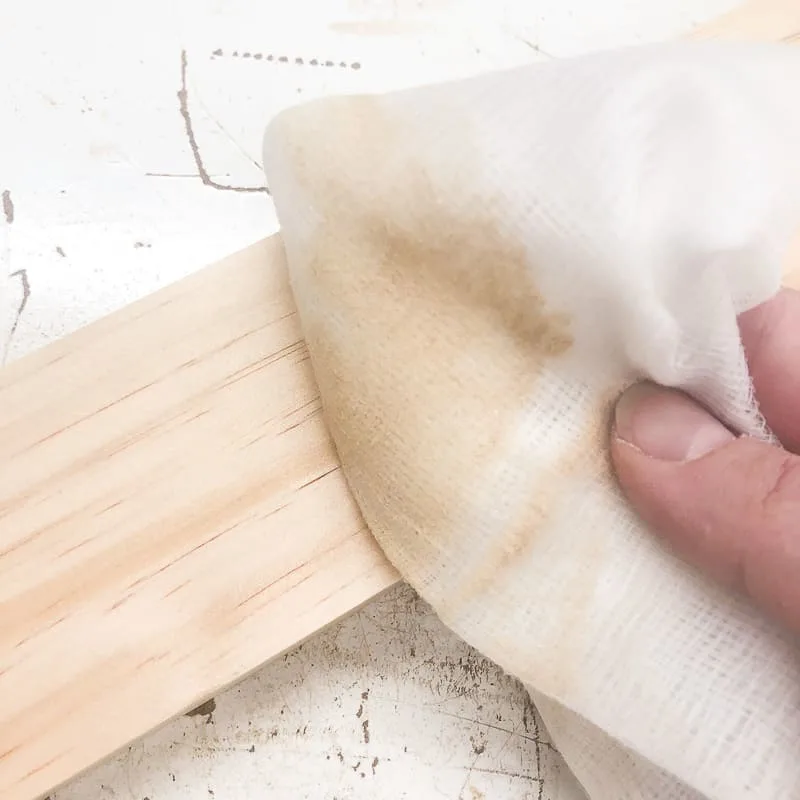
You should be able to get several uses out of one piece of tack cloth before it becomes too saturated with dust. I keep mine in a small ziplock bag to prevent airborne dust from sticking to a partially used cloth.
When the tack cloth doesn't feel sticky anymore, you can throw it away. You can use a microfiber rag as a more eco-friendly, reusable alternative to tack cloth. I'll compare the two in more detail below!
When should you use tack cloth?
You should use a tack cloth right before you apply paint, stain or other finish to any project. Even if the item to be painted isn't wood, it can still have dust and debris on the surface that can ruin the final finish.
After using a tack cloth, your surface is cleaner and less likely to produce unsightly bumps. It also allows your finish to bond properly with the surface, so it doesn't scratch off easily.
Why not use a damp rag?
Some people will use good old-fashioned soap and water before painting. And this can work for smooth, water-resistant surfaces like plastic or PVC.
But if you get wood wet, it will cause the fibers to swell and feel rough. This is called "popping the grain," and you'll need to sand it down again to make it smooth to the touch. This is a common practice when making cutting boards and other items that will get wet with use.
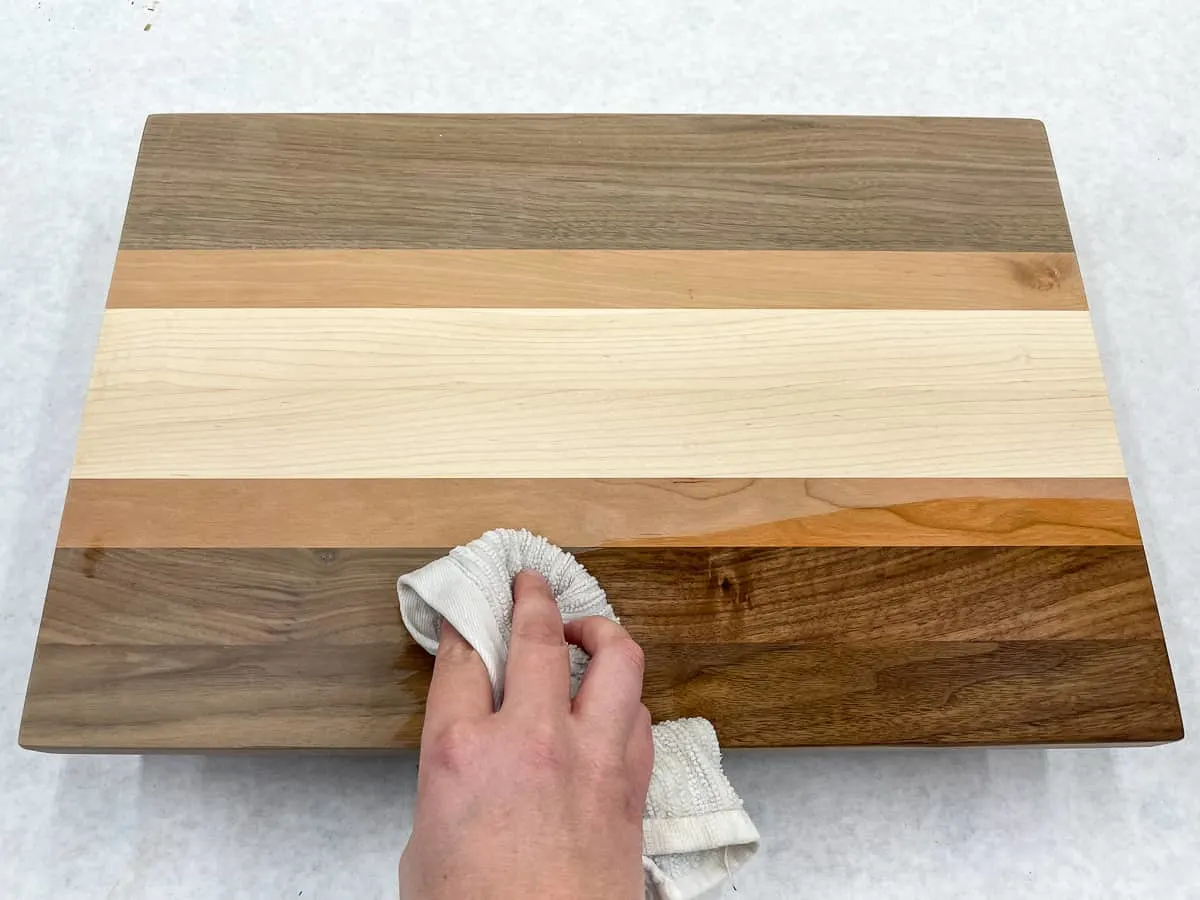
Second, water has a tendency to attract more dust. So even if you clean everything off, the moisture left behind will attract more dust!
Finally, using something besides a tack cloth can push the dust further into the grain of the wood. Tack cloth grips the particles and pulls them away.
How to use tack cloth
Using a tack cloth before painting or staining is pretty straight forward, but here are a few tips and tricks to help you get a better finish.
Finish all your sanding first
If you have a surface that needs to be repaired with wood filler or sanded smooth, perform these tasks before using tack cloth. One exception is if you're using wood filler on a large hole. The tack cloth may help remove dust in between layers of filler so it sticks together better.
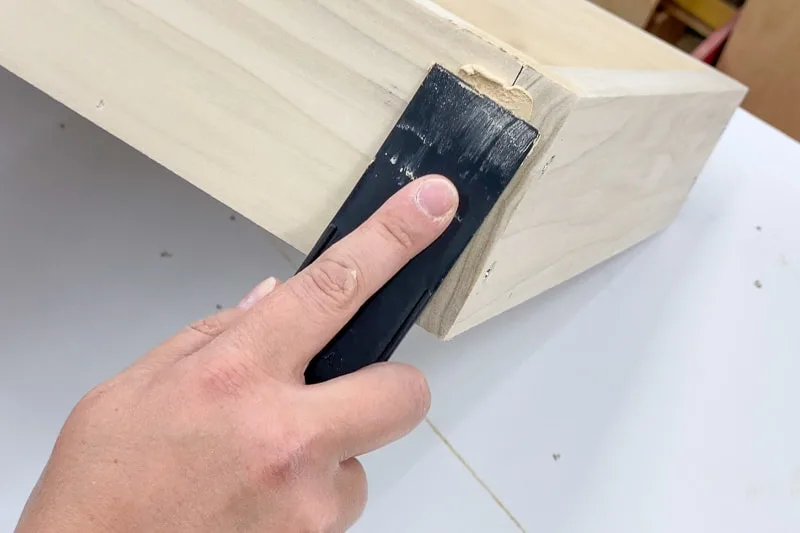
When you use the tack cloth is just as important as how you use it. The tack cloth is made to be used just before you apply a finish. If you wait until the next day, the particles in the air will have had time to settle and you’ll need to repeat the process.
Remove large particles first
Before using the tack cloth, use a light, non-abrasive brush, vacuum or compressed air to remove all the large particles. Otherwise, the tack cloth fibers will clog way too fast, and it won't be effective in preparing the surface for a finish.
If you wipe the surface, use a dry rag - you don't want to introduce more moisture. I prefer to use a microfiber cloth to grab the majority of the dust first, then follow up with a tack cloth to get those stubborn particles.
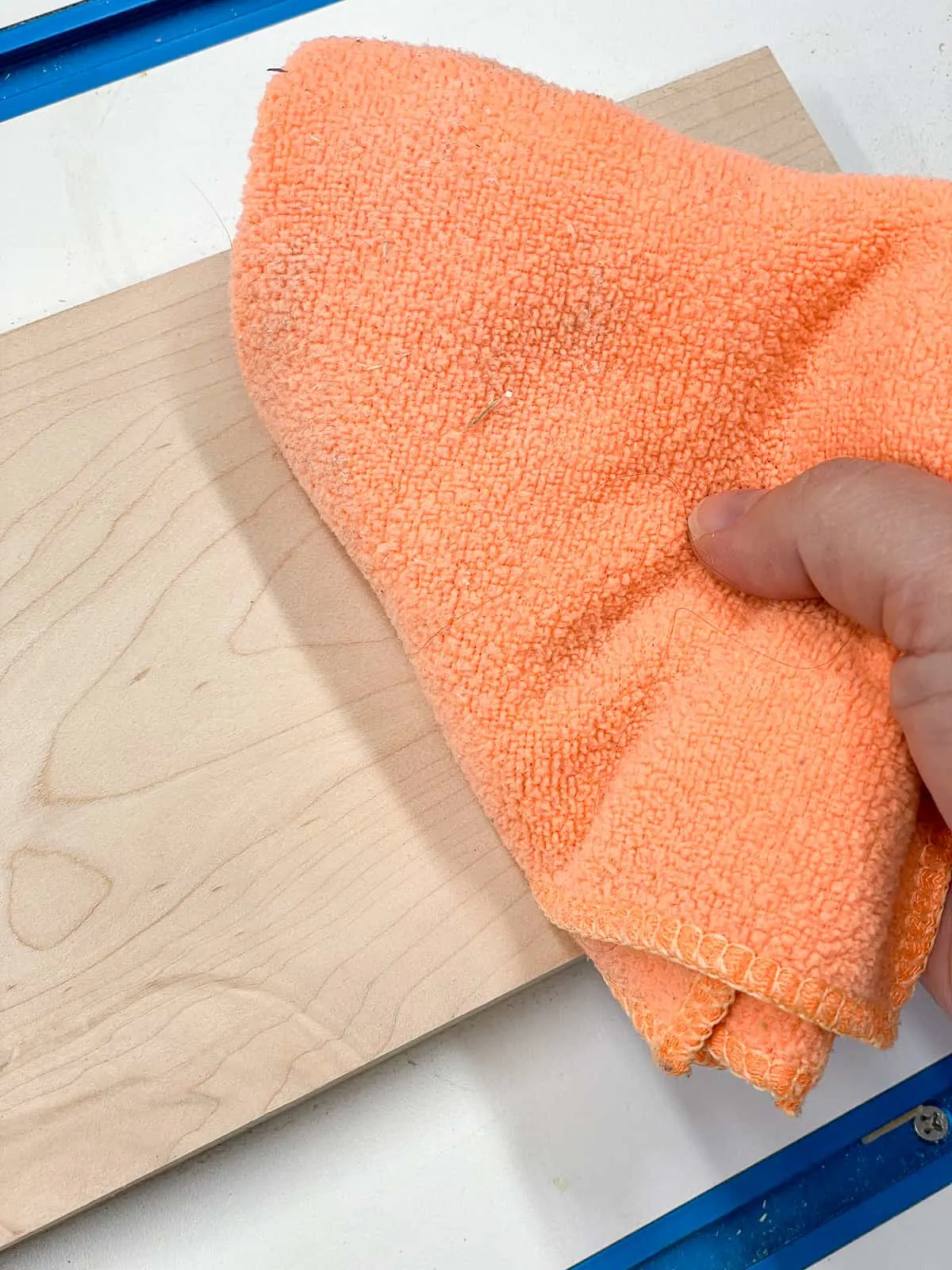
Separate the tack cloth into pieces
If you don't like the sensation of stickiness on your hands, consider wearing gloves when working with a tack cloth. The tacky residue can get on your fingers, and dust will stick to you!
You can cut a tack cloth into sections to get more life out of one piece. If you just ball it up and rub it over the wood surface, it'll be harder to find a dust-free section for the next pass. Using a single layer also leaves less sticky residue behind on your project.
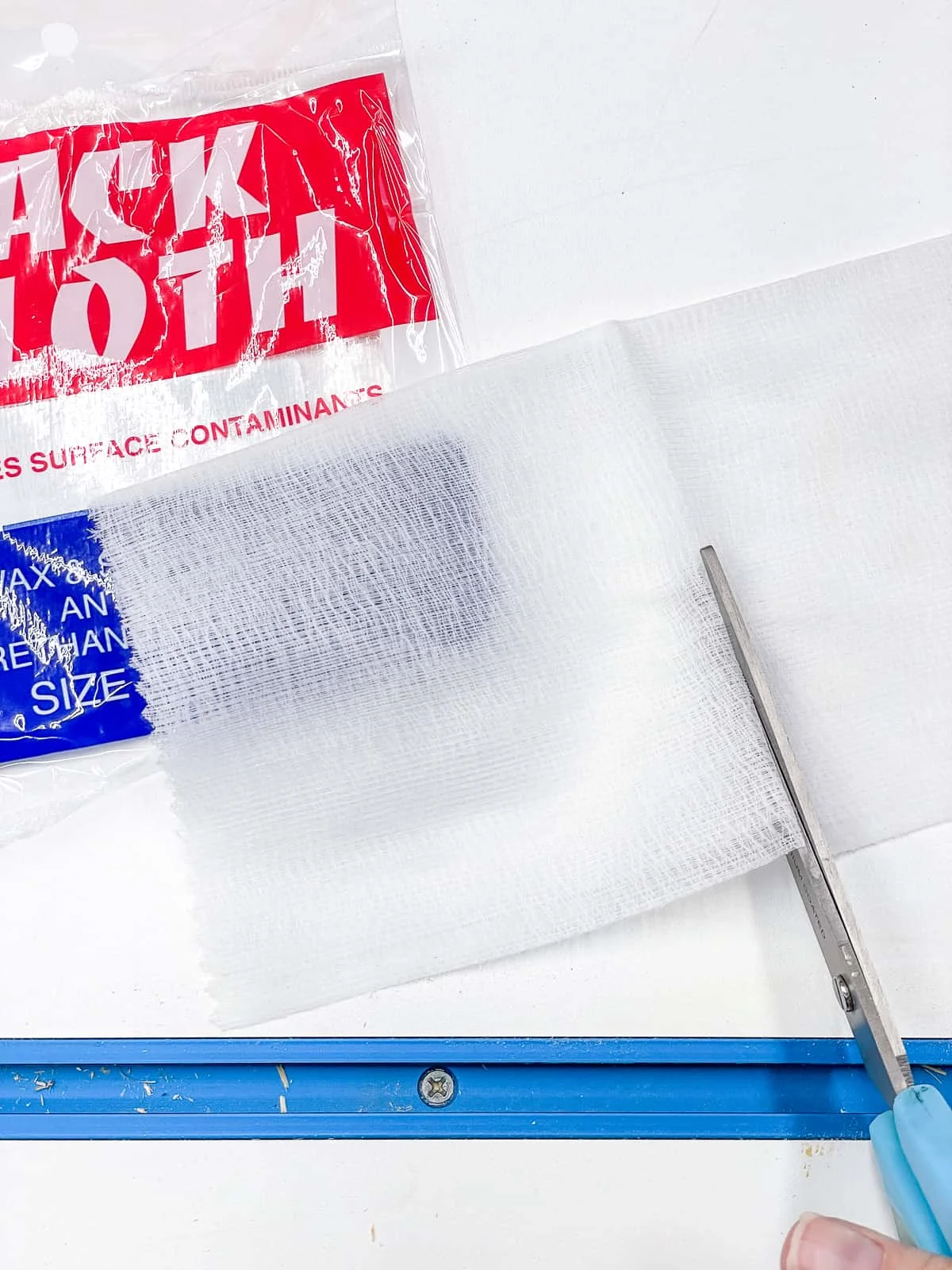
Run the tack cloth lightly over the surface
Lightly drag the cloth across the surface. Push the cloth into corners to grab the dust, but you don’t want to rub it into the surface. Think of the tack cloth more like a light duster than a piece of sandpaper.
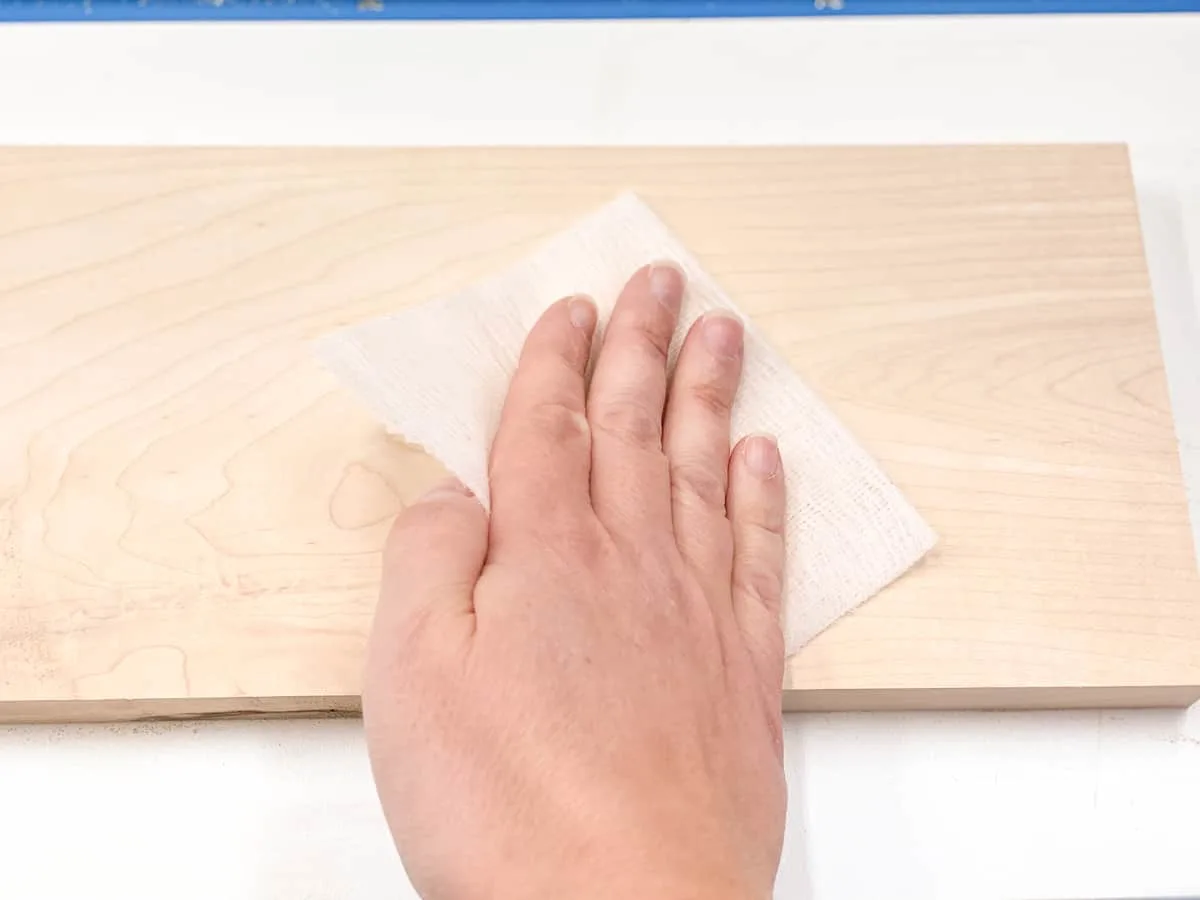
Use steady, light pressure, and go over the entire area that will be painted or stained.
Tack cloth alternatives
Some people want to avoid using a tack cloth. There are instances where improper use of tack cloth can result in a tainted finish. It can't be recycled, so it ends up in the landfill. Here are a few alternative options.
Microfiber cloth
A microfiber cloth can work well removing unseen bits of dust. The nice thing about microfiber is that it won’t leave behind any residue – the cloth itself does all the grabbing. And microfiber cloths can be cleaned and reused!
I tend to use a microfiber cloth first, then follow up with a light pass with the tack cloth. There's always dust on the tack cloth after using the microfiber rag, so I know the microfiber doesn't pick up everything! I get a lot more use out of a single square with this two step process.
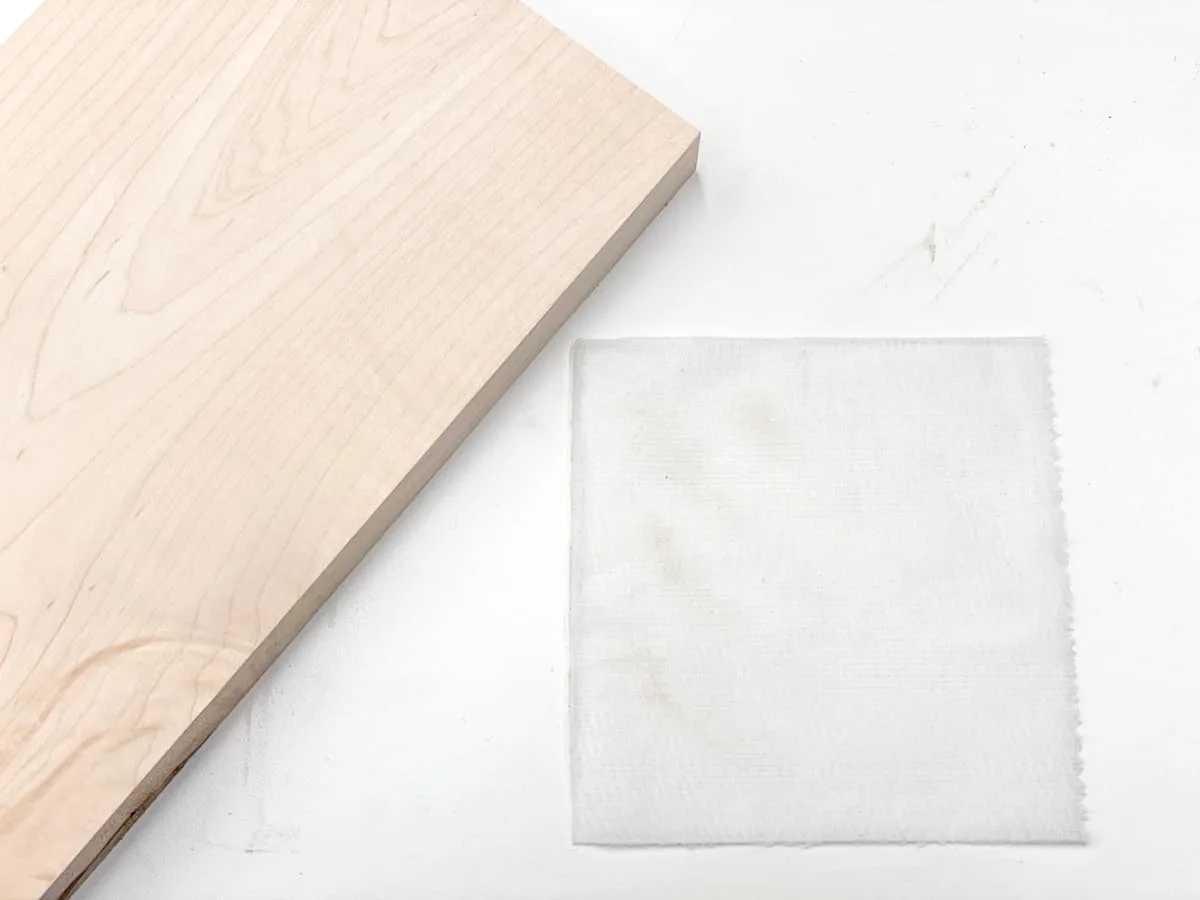
Compressed air
Compressed air is another option for removing small dust particles from a surface. The issue with this is that by blowing the dust and dirt into the air, you risk it all falling back on your finished surface.
Vacuum
Many people believe using a vacuum to remove dust and dirt from a surface is the best option. It captures the dust and doesn’t leave any residue on the surface. But it doesn't always suck up the particles that are stuck in the fibers of the wood, which can result in a flaky finish.
Homemade tack cloth
You can also make homemade tack cloths by treating cloth with beeswax or varnish. You can even use spray adhesive on rags if you need a quick fix!
Frequently Asked Questions about Tack Cloths
Will tack cloth leave a residue?
Tack cloth can leave a thin layer of residue if you wipe surfaces too firmly. The key is to gently wipe the surface, whether it's raw wood or bare metal. If there is still a sticky residue, then clean it up with mineral spirits or diluted alcohol and try something different.
Do you wet a tack cloth before using it?
No, you don’t dampen a tack cloth before you use it. A damp cloth risks several problems. First, you risk leaving more residue on the surface. Second, you could cause the wood fibers to swell, potentially altering your project. Finally, tack cloth doesn’t need moisture – it’s made to work right from the package.
Can tack cloth be cleaned and reused?
Tack cloth can usually be used several times (depending on the size of the project). But once the tack cloth is clogged with dirt and dust, there is no way to really reuse it. Most people toss it and start using a different tack cloth. If you washed the cloth, it would lose its tackiness.
Check out these other woodworking tutorials!

